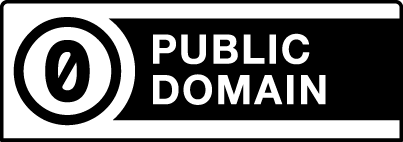![[Laser cut and engrave] Mobile Phone Stand/Amplifier](https://image-res.xtool.com/ali-res/community/making/f8a6200b-9261-4d12-9f6f-45e990765d5d/IMG_20230715_064905.jpg?x-oss-process=image/resize,w_1200,h_900,limit_0/interlace,1/format,webp/auto-orient,1)
Mobile Phone Stand/Amplifier

Information
This mobile phone stand is designed to look like a grand piano. The predominant colors are silver and gold. In addition to being a phone stand, it is also an amplifier, designed to allow sound from the phone's speaker to radiate downward thru the piano and then be redirected forward by a sound board. Most of the components are made from 2.2mm Basswood. The phone support and top are 3.0mm Lauan plywood.
Instruction
Step1: Engrave and Cut Components
The wood panels are painted before proceeding to laser operations. For this project, I have selected gold and silver metallic paints. Engravings are crisp and they contrast well. Also, there is very little discoloration from the laser on the engravings as well as the cut lines.
For the 2.2mm Basswood, all CUTs are performed at 375mm/min, 100% power, 1 pass.
The 3.0mm Lauan is CUT at 900mm/min, 100% power, 5 passes. This particular material has a very soft core and if it's cut at too slow of a speed, the cut burns very wide and is unsightly, Increasing the speed and using several passes minimizes this.
Line engravings are generally produced at 1200mm/min, 35% power, 1 pass.
The large engraving on the side of the piano is set to 800mm/min, 18% power, 1 pass. The slower speed and power produces a crisp engraving without too much discoloration for the very busy vector.
The keyboard is a bit more complicated. The keyboard outline is engraved as LINE at 1500mm/min, 40% power, 1 pass. The dark keys use the MULTI capability in LB. The first MULTI operation is to FILL the keys at 2500mm/min, 45% power, 150 dpi. The second MULTI operation is a LINE around the FILL pattern at 1200mm/min, 35% power, 1 pass.
Step2: Assemble the Sound Box onto the Base
The Sound Box allows for sound from the phone's speaker to travel thru the body of the piano. The top silver component with cut ovals is where the phone will eventually rest. The four silver pieces of the Sound Box are assembled onto the Base and then secured in place with superglue.
Step3: Assemble the Wrap-Around Side and Front Backplate
The three pieces for the wrap-around side are pressed together and then a drop of superglue on the backside secures them. The two pieces of the Backplate are assembled in the same fashion.
One end of the side assembly is attached to the Backplate. The Backplate is then pressed into position onto tabs located on the Sound Box.
Step4: Secure the Wrap-Around Assembly to the Base
The Wrap-Around side is positioned onto the Base and the tabs on the Base align with the notches on the Side pieces. No glue is applied at this time. The top perimeter Ring piece is then positioned. The Ring piece has the same tabs as the Base and locks the top of the Side into position.
Superglue is applied to all the tabs/notches on both the upper and lower sides of the Side. On the inside, the bottom perimeter of the Side is secured to the Base with a bead of white glue.
Wood glue is applied to the joints between the Side components adjacent to the Sound Box and then clamped while the glue cures.
Step5: Assemble and Install the Rear Legs to the Base
Each Rear Leg consists of two pieces, each engraved on one side. The tabs on the Legs are inserted into the slots on the Base and then each Leg assembly is clamped. Superglue is applied to the Leg assemblies as well as the tabs.
Step6: Assemble the Sound Bar and Pedals
The angle of the Sound Board is about 55 degrees and redirects sound from the phone's speaker forward, amplifying it. The mounting brackets are glued to the backside of the Sound Board.
The Pedal assembly is two pieces, the pedals and the support bracket. The tabs on the pedals are inserted into the bracket and then secured with superglue.
Step7: Assemble the Front Legs and Keyboard
Each half of the Front Legs is clamped together and superglue is applied. Then the tabs on the ends of the Keyboard are inserted into the Front Legs and glued with wood glue.
Step8: Attach the Keyboard/Leg Assembly onto the Piano
Wood glue is applied to Front Legs and underside of the Keyboard. The assembly is then positioned onto the Piano and the glue allowed to cure.
Step9: Install the Front Panel, Sound Board, and Pedals
Wood glue is used to secure the Front Panel to the back panel and clamped while the glue dries.
For the Sound Board and Pedals, wood glue is applied to the tabs of both assemblies and then the assemblies are inserted in the corresponding slots in the base.
Step10: Assemble the Phone Support and Attach Support to Top
Note: I had originally intended to use stained wood for the Phone Support and Top. However, it didn't look good (looked really bad TBH).
I CUT new components and painted them afterwards. For the Top, the piece was CUT then painted silver. When the paint was dry it was placed back onto the laser bed and the two profile LINEs were engraved.
The treble cleff is two pieces. The front piece is painted gold while the backing piece is painted silver. Note the use of the TABS feature on the treble cleff to keep the symbol intact.
Step11: Secure the Top to the Piano
Drops of Gorilla Glue are used to secure the Top assembly to the Piano body. After a few hours the clamps were removed and the Piano is DONE!

